Malcolm R. Campbell's Blog, page 198
November 20, 2015
Do Million Dollar Debuts Give Writers Hope?
Nope.
Sure, if we were the ones getting a million dollar advance from a major publisher, we would feel hopeful about our future.
Otherwise, the feeling is one of despair.
 Sure (sorry to use the word again), there may be some sour grapes behind our feelings when we read articles like Betting Big on Literary Newcomers.
Sure (sorry to use the word again), there may be some sour grapes behind our feelings when we read articles like Betting Big on Literary Newcomers.
After all, with the promotion, glitz, buzz and hoopla behind a book with a million bucks behind it, we could skip all the years of being anonymous, of writing novels many people like but that still don’t have the clout to get editorial reviews, of being asked what we’ve written and then getting a blank stare when we list a few of our novels.
As Jennifer Maloney writes in the Wall Street Journal article about betting big, “Social media sites such as Twitter, Facebook and Goodreads have contributed to a culture in which everyone reads—and tells their friends about—the same handful of books a year. It’s increasingly a winner-take-all economy, publishing executives say. ”
That’s the why behind our despair when we read about such huge advances. If your book is not one of these books, or if you’re not already a big name author, you book basically doesn’t exist in spite of all the blog tours, Amazon sales days, and GoodRead giveaways.
Our argument–as the writers down in the steerage section of the publishing ocean liner–has always been that literature would be better served if that million bucks were dedicated to the promotion of, say, ten books for one hundred grand each, or maybe twenty books at fifty grand each rather than being lavished in an advance to one person. That million doesn’t include the advertising budget.
Sometimes BIG BOOKS turn out to be really good, even wonderful. But they’re bad for literature because–like black holes–they suck all of publishing’s efforts into a small minority of what’s out there. We understand, of course, that publishers claim that the profits from big books help fund little books. Maybe, but I never see any evidence of it.
The authors who write the books that jump into the stratosphere like this worked just as hard as the authors who didn’t. But their work is being turned into a fabricated event. Big advance = lots of buzz = justified large promotional and advertising budget = high sales and many articles and book reviews. The publisher has paid to put the book on top from the starting gate.
Yes, I read these books when the critics have good things to say about them. I’m tempted like everyone else to the books I hear about. Unfortunately, like everyone else, I miss the books I don’t hear about because no advertising or promotional budget brought them to my attention.
What a shame.
–Malcolm


November 18, 2015
Isis Bookstore vandals must be stupid
Here’s the news story that caught my attention:
 Even though this Denver bookstore has been around for thirty-five years, some bumpkins think it’s associated with the recent terrorist group ISIS.
Even though this Denver bookstore has been around for thirty-five years, some bumpkins think it’s associated with the recent terrorist group ISIS.
The store has been hit four times recently: does this mean one stupid vandal hitting the store over and over or multiple stupid vandals hitting the store one time each?
The terrorist group is giving the Egyptian goddess Isis a bad name, not to mention spoiling the 1975 Bob Dylan song by the same name.

This Dáesh (ISIS) logo seems hard to mix up with the bookstore’s logo.
The the bookstore’s owner said that “the goddess represents women, healing and magic, and she says it’s a fitting name for a store that features books and gifts from all types of world traditions and spiritual sources. The shelves include Christian, Hindu, Native American and Pagan texts, to name a few.”
Obviously the vandals have never heard of the goddess, much less noticed that nothing about the store (inside or out) looks like it has jihad sponsorship. The logos don’t look the same either, even if one is color blind as well as stupid.
At times I wonder how it is that the facts and myths that were once basic common knowledge are shrinking. On the other hand, maybe the criminals who targeted the store wouldn’t know squat in any era.
–Malcolm


November 15, 2015
Moon mysteries and the lunation cycle
“The moon, with its repeating cycles of waxing and waning, became a symbol to the ancients for the birth, growth, death, and renewal of all life forms. The lunar rhythm presented a creation (the new moon), followed by growth (to full moon) and a diminution and death (the three moonless nights, that is, the dark moon).” — Demetra George in Mysteries of the Dark Moon
Whenever we see a beautiful moon, we stand in awe of it. Newspapers and the social media love pictures of harvest moons and blue moons along with suitable scientific descriptions of how and why such moons look the way they look.
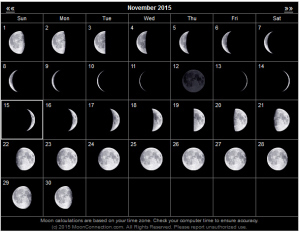
Click on this lunar calendar to find the calendar for any month.
Other than sky shows, we notice the moon less often these days unless we live along the coast and see the changing tides or maintain our farms and gardens by planting by lunar phases. Science and technology have taken us away from the lumation cycle, the interplay of light resulting from the monthly dance of the sun and the moon, so most of us are unaware of the moon’s affect on us throughout each lunar month.
In a patriarchal world, the lunar cycles are generally ignored, distrusted or feared because–in a mythic sense–they represent feminine cycles, the unconscious, emotions, and purported instability. In fact, our word “lunacy” stems from an old belief that insanity came with moon phases, and our word “moonstruck” implies that when in love and affected by the moon, we cannot act normally.
Moonless nights suggest mysteries in many ancient traditions. Jonah was in the belly of the whale for three days; Christ rose from the dead on the third day. In his “hero’s journey” sequence, Joseph Campbell refers to the belly of the whale step as a period of rebirth. We have, however, come to fear those three nights that Demetra George sees as “a time of retreat, of healing, and of dreaming of the future. The darkness is lit with the translucent quality of transformation; and during this essential and necessary period, life is prepared to be born.”
The lunation cycle

This pioneering 1967 book examines the sun and moon’s relationship in the context of our lives
Since my novel Sarabande is a story of a heroine’s journey, the chapter titles follow the sun/moon lunation cycle in support of the action throughout the book. When the person who formatted the book asked about the significance of these headings, I realized that moon symbolism is not front and center in our daily lives in a world of texting and Facebook posts, jobs and hobbies, relationships with others, or even in our thoughts of day and night.
One post cannot do justice to the work of Dane Rudhyar, Demetra George and others who have written extensively about the meaning and impact of moon phases. Briefly, though, here are the over-simplified basics:
Dark Dawning: New moon (and up to three and a half days afterwards). Life, or any other event, is a potentiality that is felt rather than seen. Think of a seed germinating in the dark earth.
Light Quickening: Crescent moon (appearing three and a half to seven days later). A challenging time for moving forward after a first look at the reality of the new moon’s vision. Think of the seed’s first shoots appearing above the ground.
Light Ascending: First quarter moon (seven to ten days after the moon was new). A time of conscious steps toward a goal. Think of a plant’s stems and roots forming to support the process of growth.
Light Dominant: Waxing gibbous moon (ten and a half to fourteen days into the journey). The vision, development and knowledge to date are fine-tuned to meet conditions. Think of buds appearing on the rose.
Summit of Light: Full moon (fifteen to eighteen days into the journey). The promise of the initial vision is realized as a reality in the temporal world and has a transformative condition within. Think of blooming flowers.
Stirrings of the Dark: Waning gibbous moon (three and a half to seven days after the full moon). The purpose of the vision comes to fruition, an apt word that means bearing fruit.
Withering of the Light: Last quarter moon (seven to ten and a half days after the full moon). With the potential realized, one begins turning away from the task. Think of flowers and stems withering away.
Depth of Dark: Waning crescent moon (ten and a half days after the full moon). As the person prepares to fully look within, this phase–also referred to as the balsalmic moon–links life and death, past and future in a way that’s often viewed as destiny before darkness returns and germination begins again with the new moon.
 The lunation cycle is often described as the result of an interplay between the active sun and the passive or receptive moon. This is somewhat misleading, I think, because it gives the impression that the moon (or the psyche) is accepting and then transmitting light from elsewhere (from without) as though no creative growth is taking place.
The lunation cycle is often described as the result of an interplay between the active sun and the passive or receptive moon. This is somewhat misleading, I think, because it gives the impression that the moon (or the psyche) is accepting and then transmitting light from elsewhere (from without) as though no creative growth is taking place.
Darkness and light are often equated logically and symbolically with evil and good rather than as components of an interactive process in which yin and yang are equally necessary. As Dane Rudhyar has pointed out, it’s incorrect to refer to the lunation cycle as a lunar cycle. Instead, it is soli-lunar, that is to say, a cycle of sun and moon in relation to each other like the warp and weft strands of well-woven cloth.
–Malcolm
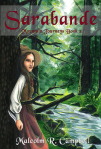 Malcolm R. Campbell is the author of the magical realism novella “Conjure Woman’s Cat” and the contemporary fantasy “Sarabande.” (See GoodReads for the current “Sarbanade” giveaway.)
Malcolm R. Campbell is the author of the magical realism novella “Conjure Woman’s Cat” and the contemporary fantasy “Sarabande.” (See GoodReads for the current “Sarbanade” giveaway.)


November 14, 2015
Creator and Founder of Worlds of Comfort Seeks Donations

Marie
Today’s guest post is provided by Worlds of Comfort on behalf of its founder. The site features spiritually oriented intuitive messages, poetry and advice by Sara Isabelle Marie. The organization’s blog can be found here.
–
Please help and assist Sara Isabelle Marie with a donation, to be able to journey back home to Sweden and keep a roof over her head! Your support is deeply appreciated!
We have all been faced with personal and extreme difficulty at one point in our life, being forced to reach out, beyond our comfort zone. I ask that this situation is being met with understanding and compassion.
Sara Isabelle Marie is currently in Faliraki, Greece, and is such a wonderful and compassionate being, fully and completely here in service to humanity and the planet through her work of Worlds of Comfort, where she is sharing powerful and Healing Poetry and Words of Wisdom (healing messages) She is currently in Faliraki, Greece and because of the unfoldment of a recent event, her financial situation is at a breaking point, not knowing if there will be food on the table or a roof over the head, in a week, let alone, be able to journey back home to Sweden. She has not been in communication with her earthly family for several years, because of her spiritual awakening, and when she is able to journey back home to Sweden, life will begin at point zero, with no available assistance from the social structure or government in Sweden. She is completely dependent on every single donation, that is being received with a tremendous amount of gratitude, to be certain that she is able to keep a roof over the head and food on the table.
PLEASE donate if you are able to, through her website at: www.worldsofcomfort.com (She will be responding with a personal thank you, and when donating 50$, a powerfully healing poem will be sent, intuitively received from your Higher God Self.)
Take the time to read the powerful and Healing Poetry and Words of Wisdom on the website. She is a brave young woman and is determined, focused and willing, but in URGENT need of your and our help, assistance and support during this difficult transition.
–
I do not know the story behind the financial reversals referred to in this message. But I am happy to turn today’s post over to Worlds of Comfort in the hope Sara will be able to take the next step in her journey.
November 12, 2015
When free and cheap transcend plots and themes
The header of an e-mail message this morning proclaimed: “Download Two Free Audio Books.”
I get e-mails like this all the time, variously titled Get Free Books, This Week’s Deals, and 99¢ Books in Your Favorite Genres.
 These deals don’t tempt me at all. I can’t imagine basing my reading choices on books that happen to be free or cheap this week. For one thing, the list of books on my To Be Read List is already long enough. Reading the books I select based on plots and themes (and, yes, on authors’ names) will represent an investment in time. Seeing a deal for a cheap or free book doesn’t grant me a cosmic gift of 30-hour days of extra reading time.
These deals don’t tempt me at all. I can’t imagine basing my reading choices on books that happen to be free or cheap this week. For one thing, the list of books on my To Be Read List is already long enough. Reading the books I select based on plots and themes (and, yes, on authors’ names) will represent an investment in time. Seeing a deal for a cheap or free book doesn’t grant me a cosmic gift of 30-hour days of extra reading time.
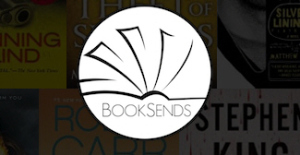 My books have benefited from their listings in newsletters like ebooksoda and booksends. When I reduce the price and advertise the book in a newsletter for 99¢, there’s a lot of movement on the book’s Amazon page. My hope here is that people who are already tempted by a book from an author they don’t yet know (me) will try out the book while it’s on sale. Some of those who enjoy the book come back and write reviews.
My books have benefited from their listings in newsletters like ebooksoda and booksends. When I reduce the price and advertise the book in a newsletter for 99¢, there’s a lot of movement on the book’s Amazon page. My hope here is that people who are already tempted by a book from an author they don’t yet know (me) will try out the book while it’s on sale. Some of those who enjoy the book come back and write reviews.
Newsletters, tweets and e-mail messages offering low-cost books definitely offer a service too readers. I’ve found and enjoyed books by known and unknown authors this way. I image lots of people do.
 Nonetheless, I’m bothered about the process because after seeing the seemingly infinite number of pitches and promotions for cheap and near-cheap books, I start worrying that everything I say about the plots and themes of my own books–or recent books I’ve enjoyed–doesn’t matter to anyone without the presence of a deal.
Nonetheless, I’m bothered about the process because after seeing the seemingly infinite number of pitches and promotions for cheap and near-cheap books, I start worrying that everything I say about the plots and themes of my own books–or recent books I’ve enjoyed–doesn’t matter to anyone without the presence of a deal.
Seriously, are large numbers of people reading books based on free and cheap rather than anything else? Or, with the advent of e-books (after all, it’s just a file), is there no room in the economy for books that sell at a high enough price to actually pay the authors’ for the time it took to write them?
Most little-known authors won’t sell 11787.8787879 books to earn $11,787 during the year. ($11,787 is the federal poverty level threshold for one person.) In fact, if they’re paying to get their books included in the deals newsletters, they’ll be running at a loss if they sell 11787.8787879 copies at 99¢.
 The economics from the author’s perspective are rather grim when the marketplace–with Amazon’s constant pushing–looks at the default book price for anyone who isn’t on the New York Times bestseller list as 99¢. Amazon, of course, can make a profit when selling by volume because Amazon isn’t using up a year or two worth of writing hours to create the books on its site.
The economics from the author’s perspective are rather grim when the marketplace–with Amazon’s constant pushing–looks at the default book price for anyone who isn’t on the New York Times bestseller list as 99¢. Amazon, of course, can make a profit when selling by volume because Amazon isn’t using up a year or two worth of writing hours to create the books on its site.
For authors and others who love great books and well-told stories, the main concern here really isn’t personal income because earning enough to live on is assumed for the most part to be impossible. The biggest concern is that more and more book-buying choices aren’t based on great books and well-told stories, but on free or cheap. When that happens, quality becomes the lowest common denominator in ones book-buying choices.

Wikipedia photo
I used joke with my mother about the “savings” of spending a several extra hours’ worth of shopping time each week (and a lot of extra gallons of gasoline in the car) for going to multiple grocery stores to “benefit” from a few pennies off here and a few pennies off there. My view was that she was running in the red looking for deals. Now, the Internet makes the deals easier to find with little time and energy devoted to the search.
So where do we end up? Are books’ plots and themes losing out to free and cheap because the Internet helps us find the deals without having to spend much time looking for them? Or, are readers who care about plots and themes still finding the books they’ve always loved at a reduced price?
I don’t know if quality is suffering or not. But I worry about it.
–Malcolm


November 9, 2015
The Twisty Word from WrenchCon 5201
Orlando, Star-Gazer News Service, November , 2015–The 5,201st annual WrenchCon concluded here today with a rousing speech by Susan Spanner called “I’m Gonna Wrench Those Blues out of My Life.”
 Wrench inventors from across the country found that every major speaker and small group leader was putting a positive twist on wrenches after a year when big media trounced indie wrenchers with charges of patent infringement and shoddy work just to get their creations before the public eye.
Wrench inventors from across the country found that every major speaker and small group leader was putting a positive twist on wrenches after a year when big media trounced indie wrenchers with charges of patent infringement and shoddy work just to get their creations before the public eye.
“In today’s global economy, we need a diversity of independents entering the arena rather than the same old, same old BIG TOOL getting all the action,” said Spanner. “This market needs the innovation of the indie grip.”
The 5,201st meeting of WrenchCon got off to a chaotic start when a flurry of typographical errors in posters, direct mail and the convention web site inadvertently–one supposes–advertised the event as WenchCon, proclaiming that “Wenching with pros will improve your technique.”
 Once the wenchers and wrenchers were sent to separate sections of the newly-remodeled Roadkill Convention Center on Lake Alligator, a full schedule of seminars, discussion groups, and pitch-your-wrench meetings made the week well worth the money in spite of the usual injuries, according to exit surveys.
Once the wenchers and wrenchers were sent to separate sections of the newly-remodeled Roadkill Convention Center on Lake Alligator, a full schedule of seminars, discussion groups, and pitch-your-wrench meetings made the week well worth the money in spite of the usual injuries, according to exit surveys.
Subjects included:
Do wrenchers owe end-users 24/7 access on the social media?
Can inventors be more creative with the open-end wrench or the box-end wrench?
Getting your crescent-style wrench in to Home Depot and Lowes.
Minimalism and the all-but-forgotten Allen wrench.
Power tools and socket wrenches did not ruin the business.
Don’t base your promotion on lame sentiments such as “the first day I knew I wanted to be a wrencher.
The highlight of the convention for most attendees was a personal meeting with a professional wrench agent who listened to their best “elevator pitches” and then offered suggestions for improvement. The winner of the Best Damned Pitch Award, Harvey Torx, was offered a long-term contract with the Twist Your Nuts Tool Company.
“My stardust driver will out screw a Phillips or slot head every day of the week and twice on Sunday,” Torx said.
The general public had a chance to twist and grip samples of the latest in wrench design at Saturday’s wrench fair where inventors autographed their tools and gave out plenty of swag and/or swagger.
According to informed sources, even those who thought they were in Florida for a wench convention enjoyed the Southern Comfort and the product demonstrations.
Ben Walker, who drove to Orlando from Rome, Georgia, said, “More than once, I found myself exclaiming, ‘I didn’t know you could do that.”
A family business representative from New York City, Salvador Lucchese, said “I could kill for some of these wrenches–not to mention, with them.”
“I was planning to go into the gigolo business,” said Marty Smith, “until WrenchCom 5201 showed me that the twist didn’t come and go with Chubby Checker.
–
Story by Jock Stewart, Special Investigative Reporter


November 6, 2015
Briefly Noted: Joseph Campbell’s ‘Romance of the Grail’
Romance of the Grail: The Magic and Mystery of Arthurian Myth (The Collected Works of Joseph Campbell), Evans Lansing Smith, Editor, ( New World Library, December 15, 2015), 304pp
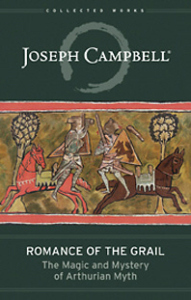 Joseph Campbell scholars and Arthurian legends students have been waiting for this volume for a long time. Sponsored by the Joseph Campbell Foundation, this collection focuses on the myths that introduced and excited Campbell about the over-arching mythic theories he spent a lifetime developing.
Joseph Campbell scholars and Arthurian legends students have been waiting for this volume for a long time. Sponsored by the Joseph Campbell Foundation, this collection focuses on the myths that introduced and excited Campbell about the over-arching mythic theories he spent a lifetime developing.
The book’s editor, Evans Lansing Smith became interested in disseminating Campbell’s views of the quests after discovering a typewritten copy of Campbell’s masters thesis “A Study of the Dolorous Stroke” which exams the motif of the wound and wasteland in the stories.
In an interview about the book, Smith said he hopes readers “will be as deeply engaged — and, indeed, as mesmerized as I was — with the power, grace, and fun with which Campbell retells the stories of the knights so central to the Grail romances: Yvain, Lancelot, Parzival, Gawain, Tristan, and others. As an Irishman, Campbell came from a long lineage of oral tradition, so that he was able in a couple of hours to convey more of the complexity and spiritual depth of those stories than many have been able to in long books on the subject.”
From the Publisher
The Arthurian myths opened the world of comparative mythology to Campbell, turning his attention to the Near and Far Eastern roots of myth. Calling the Arthurian romances the world’s first “secular mythology,” Campbell found metaphors in them for human stages of growth, development, and psychology. The myths exemplify the kind of love Campbell called “amor,” in which individuals become more fully themselves through connection. Campbell’s infectious delight in his discoveries makes this volume essential for anyone intrigued by the stories we tell—and the stories behind them.
Library Journal: “Smith provides well-rounded and concise essential readings on Arthurian mythology by one of America’s leading mythologists and incredible storytellers. Highly recommended for readers interested in Campbell, mythology, or Arthurian studies.”
When Campbell talks and writes about mythology, he presents the material as though he were there when it happened. He makes complex themes accessible. The Grail stories certainly lend themselves to his expertise and insights.
–Malcolm


November 3, 2015
Magical Realism Writing Tips – Importance of Belief
When an author writes a novel or short story in the magical realism genre, magic is always a natural and unquestioned component of the characters’ lives and the environment in which they live. As an author, you’re more likely to write a believable story if–while you’re writing, at least–you assume the magic is real.

This is my favorite blog because the writer has many years of experience and a great archive of posts for many Hoodoo subjects.
This doesn’t mean you must personally subscribe to the philosophy and practices of the magical system in your story whether that system is a known collection of beliefs such as hoodoo or Voodoo or a fictional system you built from scratch.
I prefer using practices based on actual belief systems because they already have a rich, varied and somewhat known lore that is often much deeper than anything a most of us can make up.
When I wrote Conjure Woman’s Cat about a root doctor (another name for a conjure practitioner), I began by reading books and web sites written by people who practice hoodoo. When I had a question, I asked them, usually making it clear that I was researching a novel rather than following the belief system myself. (You’ll see some of the sites/books I consulted in the folk magic category of my Myth and Magic Resources post.)
At times, I’ve read paranormal and magical realism books by authors who take a known system–say, witchcraft–and have their characters doing things that are completely outside the realm of the practice whether it’s Wicca or the traditional craft. Hollywood has done this a lot, but I feel more anger about it when I find it in a novel by a known writer who can look stuff up and talk to experts and keep the magic within the realm of what a system claims is possible. Witches do not worship the devil nor utilize spells that look like they originated in the Harry Potter series or Lord of the Rings.

This is a more commercial site with products to sell. However, it also has a wealth of information about spells, herbs and candles.
Yes, we all take liberties when telling a good yarn, and even when we don’t, it’s probable that (in my case) a real conjure woman will find things in my book that are unrealistic. I try to make the material as accurate as possible for a fiction writer–as opposed to a real practitioner who writes a novel based on their own experiences.
One way to make your story accurate is through the use of multiple sources. This helps you understand the magical approach well enough to write about it in your own words.
Of course, if you make up the magic from scratch, it helps if you set limits on it (so that your characters aren’t all-powerful) and keep it consistent. Don’t state a magical rule on page 25 and then have a character successfully ignore that rule on page 250.
For your readers to believe, you have to believe. Most of them will believe while they’re reading the story. That’s how you need to feel. I didn’t become a conjurer after I wrote Conjure Woman’s Cat, and I don’t expect my readers to do so either.
If you don’t believe while you’re writing, the story won’t ring true because your author’s point of view is that it isn’t true.
There’s a lot of anecdotal evidence that a fair number of people believe witchcraft, hoodoo and Voodoo work. Frankly, I don’t have an opinion about that and did everything possible while writing to refrain from judgement.
What we hope for when we write magical realism is that our readers will be carried away by the story as though everything in it is absolutely possible, maybe not in their own lives, but in the lives of our characters.
When magicians like Penn and Teller walk out on the stage in front of you or when you see them on TV, you know that what they’re doing is an illusion. You’re in the audience to be fooled and when the magician carries off a trick perfectly and you can’t figure it out, you laugh and applaud and ask for more.
A magical realism short story or novel is also an illusion. If both the magic and the realism in the story are done well, you’ll be fooled into thinking everything you read did happen or could happen. Neither the stage magician nor the writer dares approach his or her audience with any doubts about the effect s/he is trying to achieve. Doubts kill the performance, on stage or in writing.
And then, too, sometimes that stage magician and that writer include a bit of real magic under the guise of illusion. We always want you to think, “hmm, I wonder.”
–Malcolm
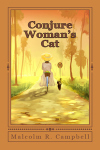
 Malcolm R. Campbell is the author of the contemporary fantasy novel “Sarabande” and the magical realism novella “Conjure Woman’s Cat.”
Malcolm R. Campbell is the author of the contemporary fantasy novel “Sarabande” and the magical realism novella “Conjure Woman’s Cat.”


November 2, 2015
Myth and Magic Resources and Links
While working on Conjure Woman’s Cat, Sarabande and other novels, I compiled a list of resources for others interested in writing about magic or learning more about spiritual/new age resource materials.
 The following resources, collected from this blog’s posts, may be helpful to others studying or following the heroine’s journey, folk tales and magical pursuits. These are books and sites I found helpful as I researched my novels and short stories.
The following resources, collected from this blog’s posts, may be helpful to others studying or following the heroine’s journey, folk tales and magical pursuits. These are books and sites I found helpful as I researched my novels and short stories.
Dark Moon
Black Moon and the Black Madonna on Sophia’s Children
Goddess Meditations by Barbara Ardinger
Dragontime Magic and Mystery of Menstruation by Luisa Francia
The Moon Watcher’s Companion by Donna Henes.
Moon Watching by Dana Gerhardt
Moon Tides, Soul Passages by Maria Kay Simms
Moon Mother, Moon Daughter by Janet Lucy
Witchcraft vs. Wicca – See one view here on Hecate’s Cauldron
Death and Rebirth
Descent to the Goddess by Sylvia Brinton Perea
The Myth of the Goddess: Evolution of an Image by Anne Baring and Jules Cashford
The Pattern of Initiation in the Evolution of Human Consciousness by Peter Dawkins & Sir George Trevelyan
Inanna, queen of heaven and earth: Her stories and hymns from Sumer by Diane Wolkstein and Samuel Noah Kramer – This book, first published in 1983, presented a long-awaited translation of the original Inanna material from the 2000 BCE cuneiform clay tablets.
Folk Magic
HOODOO IN THEORY AND PRACTICE – An Introduction to African-American Rootwork by Catherine Yronwode – An introduction to hoodoo, including basics, spells, herbs, and related blues songs.
The Black Folder, edited by Catherine Yronwode, 2013.
Drums and Shadows, folk magic practices in the state of Georgia assembled by the WPA in the 1930s. The online overview describes the book this way: This collection of oral folklore from coastal Georgia was assembled during the 1930s as part of a WPA writers’ program, under the supervision of Mary Granger. The accounts in this book, framed by colorful descriptions of the rural locales where they were collected, were principally from elderly African-Americans, some of them centarians. Most had been slaves. In some cases they had known first generation slaves who had been born in Africa.
Hoodoo Herb and Root Magic, by Catherine Yronwode, 2002.
“Remembering Hoyt’s Cologne,” Malcolm’s Round Table
The Sanctified Church, by Zora Neale Hurston, 1981.
SOUTHERN SPIRITS: Ghostly Voices from Dixie Land – Web site features reference materials from the South during the slavery years about conjure and hoodoo.
Mojo Workin’: The Old African American Hoodoo System by Katrina Hazzard-Donald, University of Illinois Press; 1st Edition edition (December 17, 2012)
Heroine’s Journey
The Heroine’s Journey by Maureen Murdock
From Girl to Goddess: The Heroine’s Journey through Myth and Legend by Valerie Estelle Frankel (See the July 2011 “Mythprint” review of this book here.) Frankel’s website includes a lengthy heroine’s journey reading list.
Sarabande contemporary fantasy by Malcolm R. Campbell released by Thomas-Jacob Publishing in a new second edition November 20151.
“The Way of Woman: Awakening the Perennial Feminine” by Helen M. Luke
Apple Farm Community – The Writings of Helen M. Luke
Real Women, Real Wisdom: A Journey into the Feminine Soul by Maureen Hovenkotter (See a review here.)
The Heroine’s Coach, the website for Susanna Liller’s journey-oriented coaching services. The site includes an e-mail newsletter for women following their own paths called “Journey News.”
The Heroine’s Journey appears on author Leslie Zehr’s Universal Dancer website and includes a discussion of Sylvia Brinton Perera’s Descent to the Goddess, a book I found essential for my understanding of the journey. Zehr is the author of The Alchemy of Dance: Sacred Dance as a Path to the Universal Dancer.
Light of Nature
Light of Nature Website, exploring the science and the philosophy of the concept.
“The Female Brain” by Louann Brizendine
“The Spell of the Sensuous” by David Abram
Messages from Mother – Author Mare Cromwell’s website.
Heroine Literature
The Heroine’s Bookshelf: Life Lessons, from Jane Austen to Laura Ingalls Wilder by Erin Blakemore
Fearless Girls, Wise Women & Beloved Sisters: Heroines in Folktales from Around the World by Kathleen Ragan
The Heroine in Western Literature: The Archetype and Her Reemergence in Modern Prose by Meredith A. Powers
The Art of Fiction: Illustrated from Classic and Modern Texts by David Lodge
Mythic Archetypes
Goddesses in Everywoman: Powerful Archetypes for Women by Jean Shinoda Bolen
Patriarchy
The Dance of the Dissident Daughter by Sue Monk Kidd
Unplugging the Patriarchy – A Mystical Journey into the Heart of a New Age by Lucia René
Reviving Ophelia by Mary Pipher
Ophelia Speaks: Adolescent Girls Write about Their Search for Self by Sara Shandler
Surviving Ophelia: Mothers Share Their Wisdom in Navigating the Tumultuous Teenage Years by Cheryl Dellasega
Story Within
And Now The Story Lives Inside You, poems by Elizabeth Reninger
The Spell of the Sensuous by David Abram
Alchemical Studies by C. G. Jung
Harry Potter – A New World Mythology? By Lynne Milum
“Dark Wood to White Rose: Journey and Transformation in Dante’s ‘Divine Comedy’” by Helen M. Luke
“The Soul’s Code: In Search of Character and Calling” by James Hillman
Tarot
Writer’s Muse
The Sister from Below: When the Muse Gets Her Way by Naomi Ruth Lowinsky
Marry Your Muse: Making a Lasting Commitment to Your Creativity by Jan Phillips
The Voice of the Muse: Answering the Call to Write by Mark David Gerson.
20 Master Plots: an How to Build Them, by Ronald Tobias
The Hero’s Journey: A Guide to Literature and Life by Reg Harris and Susan Thompson (This is a series of lesson plans for teaching the hero’s journey in a classroom setting.)
Fairy Tales, Folk Tales, and Related Stories
Myth & Moor – Terri Windling’s blog
Marina Warner Website – Writer of fiction, criticism and history with a strong focus on fairy tales.
The Endicott Studio – “The Endicott Studio, founded in 1987, is a nonprofit organization dedicated to literary, visual, and performance arts inspired by myth, folklore, fairy tales, and the oral storytelling tradition.”
“The Irresistible Fairy Tale: The Cultural and Social History of a Genre,” by Jack Zipes. A wonderful study of the genre available in paperback and Kindle.
Fairy tales and Literature – An online bibliography from author and professor Theodora Goss. Great introduction of resource material.
–Malcolm
Malcolm R. Campbell is the author of magical realism, contemporary fantasy, and paranormal stories and novels.


October 31, 2015
November 1 is an auspicious release date for ‘Sarabande’

Click on graphic to watch trailer
The new second edition of my contemporary fantasy Sarabande will be released by Thomas-Jacob Publishing on November 1. This is the perfect day to begin the life of a book with a ghost.
Traditionally, the fire festival of Samhain (pronounced SAH-win)–now commercialized into Hallowe’en)–sits within a period of the year of “no time or space” because it’s a boundary. Ancient traditions view boundaries and other threshholds as liminal in a magical sense because they take on some of the characteristics of both sides of the figurative doorway.
 Samhain is a boundary between the summer and winter, days of sun god and the moon goddess, and saying goodbye to the last harvest and hello to the dark days of winter. Perhaps you’ve heard it said that the veil between the world of the living and world of the dead is thin on Hallowe’en. It’s more an altered state of mind, really, at a time directly between the autumnal equinox and the winter solstice, half a year of way from the May celebration of Beltane.
Samhain is a boundary between the summer and winter, days of sun god and the moon goddess, and saying goodbye to the last harvest and hello to the dark days of winter. Perhaps you’ve heard it said that the veil between the world of the living and world of the dead is thin on Hallowe’en. It’s more an altered state of mind, really, at a time directly between the autumnal equinox and the winter solstice, half a year of way from the May celebration of Beltane.
In my novel, the protagonist Sarabande decides that the only way to stop her dead sister Dryad from haunting her is to travel to the place where Dryad resides. So it is that Sarabande’s journey is tied to the cycles of the moon and very much on perceiving and confronting a denizen of the underworld.
When my publisher and I started talking about bringing Sarabande back into print, we didn’t have a November 1st release date in mind. That’s just how all the updating, editing, and formatting came out. That’s one way of looking at a story with a ghostly antagonist.
There’s also another way of looking at it. The threshold spirits have their own schedule, and they know that November 1st stands dead center in a magical time period. Night and the Goddess of Night are giving this edition a bit of a supernatural nudge and I appreciate it.
I hope you do, too.
–Malcolm









